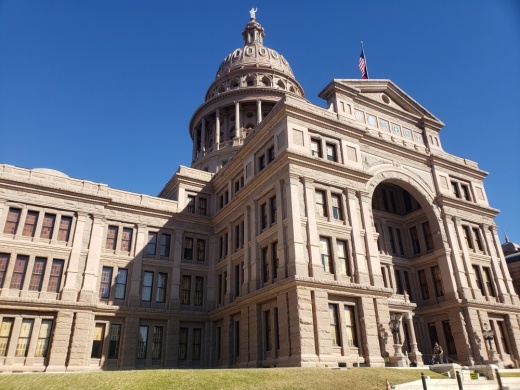The Texas Senate released proposed redistricting maps Sept. 18 ahead of the Legislature’s special session, which began Sept. 20.
Texas saw rapid growth in Hispanic populations and those identifying as Black or Asian, according to the U.S. Census. The state’s growth was enough for it to add two U.S. House seats in 2021 for a total of 38 Texas representatives in Washington, D.C.
Robert Murray, a political science professor at the University of Houston and former redistricting advisor to Texas’ Black legislative caucus, said that in addition to increases, the state saw minority populations move out toward the suburbs–which could influence how maps are redrawn.
“The minority populations have grown dramatically, but it has also dispersed,” Murray said. “There’s a lot of Black and brown flight to the suburbs, more than previous decades.”
Changes to the process
Texas Republicans will control the partisan redistricting process for the special session. Lawmakers will redraw maps for the state’s congressional and legislative districts as well as for the State Board of Education.
According to the state’s redistricting website, the two basic requirements for the process are that districts must have equal or as close to equal population as possible, and that districts cannot be drawn in a way that would limit voting based on race, color or language group.
A 1973 U.S. Supreme Court case, White v. Regester, defined “equal population” as a redistricting plan where the most populous district has at most 10% more than the ideal district population—or the district population determined by dividing the state population by the number of districts. The least populous district would have 10% less than the ideal district population, the redistricting website states.
A change that goes into effect for 2021 is the removal of preclearance, which the U.S. Supreme Court struck down in 2013, according to the redistricting website. Preclearance was a provision of the 1965 Voting Rights Act, which required states with a history of racial discrimination to submit their plans to the federal government before they could be approved.
Redistricting proposals are submitted as bills and progress through the Texas House and Senate similarly to other legislation.
Redistricting strategies for both parties
Murray detailed two strategies lawmakers can use to gerrymander districts in their parties’ favor: packing and cracking.
The state redistricting website defines packing as drawing districts to concentrate a high amount of a voting group in one district. That ensures the group gets a candidate elected but also that neighboring districts can get candidates in an opposing party elected as the targeted voting group will be diluted in neighboring districts.
“You pack [opposition voters] into one district, which would waste votes, and then the surrounding districts get bleached,” Murray said.
Murray defined cracking as the process of extending districts from rural districts into more densely populated urban areas, such as Harris County.
“The goal is the same as packing,” Murray said. “Cracking focuses on splitting up these concentrations of voters so that they aren’t strong enough to win the districts.”
Texas saw some of the largest increases in the nation among populations in the 2020 Census. These increases were concentrated in fast-growing counties such as Hays, Williamson and Tarrant counties—all three of which flipped to Democrat in the 2020 presidential elections.
Murray said the suburban counties could be the first targets in redistricting for Republicans due to their growth, which resulted in either narrow Republican victories or flipped districts. Murray identified Senate District 7 in the Houston area, currently represented by Paul Bettencourt, as one area Republicans might seek to address during the process.
For current Democrats, meanwhile, Murray said their options are limited. With the removal of the preclearance provision, opposition to any maps drawn during the special session must come in the form of lawsuits that can only be enacted once maps are approved in the Legislature.
“In terms of what Democrats have to work with, it’s a closed toolbox,” Murray said.
One other option for opposition is in the form of a lawsuit filed by two Texas Democrats—Sen. Roland Gutierrez, D-San Antonio, and Sen. Sarah Eckhardt, D-Austin. The complaint alleges redistricting cannot take place during a special session per the Texas Constitution, which says redistricting must happen during the first regular session following the publication of the Census. Murray described the lawsuit as a “long shot.”
The Texas Senate will hold the first public hearings for redistricting legislation Sept. 24 and 25, for Senate Bill 4 and Senate Bill 7 respectively.





